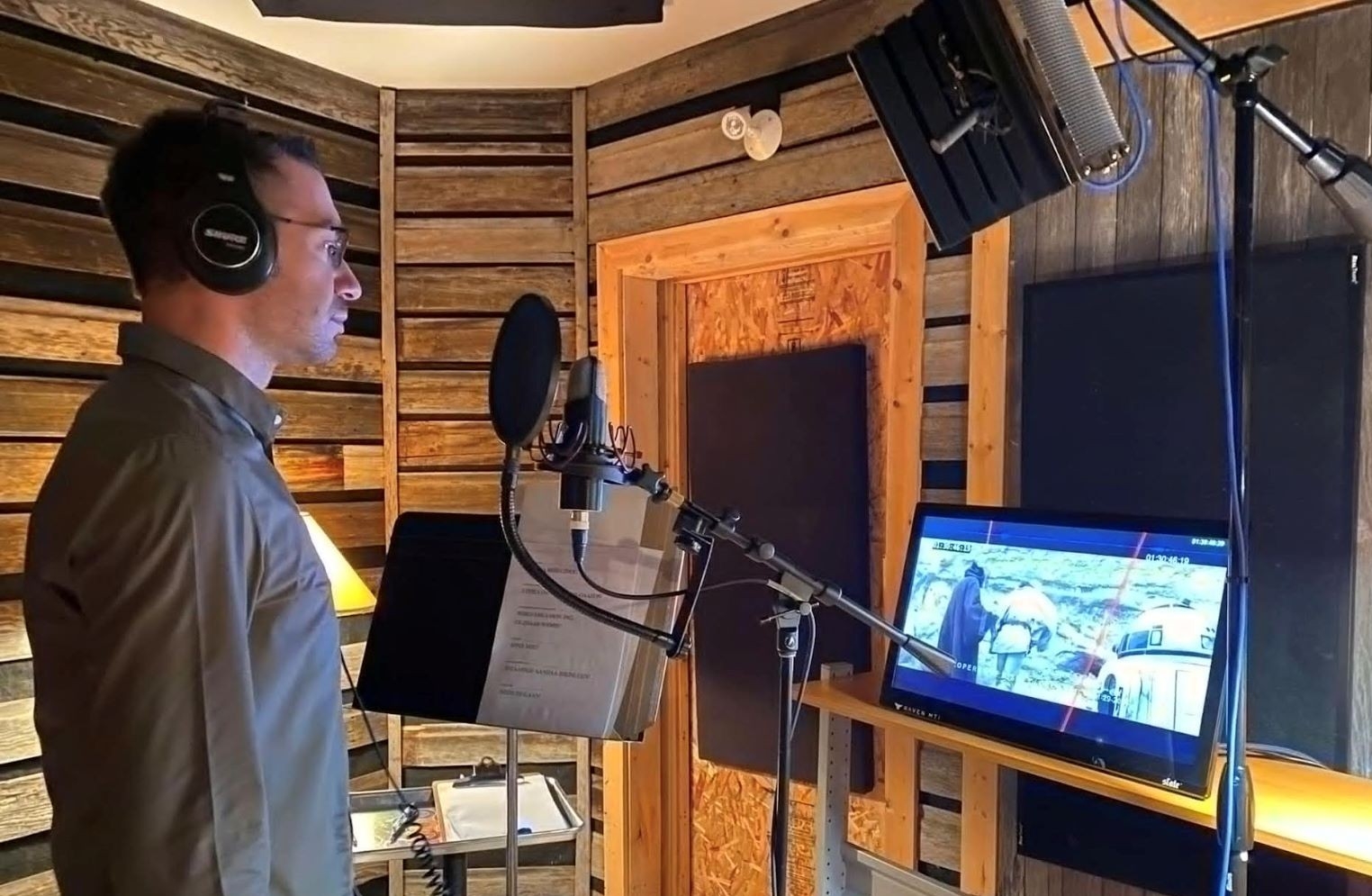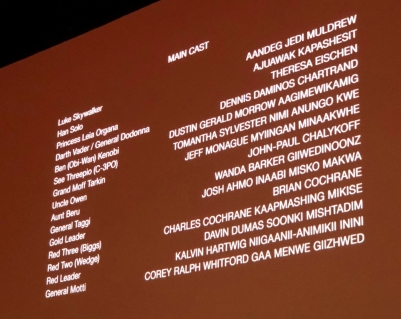A passion for storytelling led him to Concordia in 2015, where he pursued a graduate diploma in the Department of Communication Studies. It was a transformative time.
“Concordia gave me some of the tools and resources I needed to tell stories in a meaningful way,” Niigaanii explains. “Other tools I learned from my Elders.”
A short film he created, This Is Who I Am, explored themes of identity and heritage, premiered at the United Nations and screened at film festivals and schools worldwide.
The leap into voice acting came serendipitously after Niigaanii saw a casting call for the Ojibwe dub of Star Wars on Facebook. As a lifelong fan of the franchise and a dedicated advocate for language revitalization, he knew he had to audition.
The recording process took place over a 10-day period in Winnipeg, Manitoba. When the film premiered in the city, it was an emotional moment for Niigaanii and many Anishinaabe community members in attendance.
“You could feel the pride in the room as we heard our language on the big screen for the first time,” he says.
Niigaanii hopes that pride and impact will ripple out, creating pathways for young people to engage with their heritage in ways that feel relevant and exciting.
“Star Wars is such an epic story,” he says. “Bringing it into Ojibwe makes it accessible and gives it new meaning. I hope it inspires many to begin, or continue, learning our language.”


 Kalvin Hartwig Niigaanii-Animikii Inini, GrDip 16
Kalvin Hartwig Niigaanii-Animikii Inini, GrDip 16
 “You could feel the pride in the room as we heard our language on the big screen for the first time,” says Niigaanii
“You could feel the pride in the room as we heard our language on the big screen for the first time,” says Niigaanii